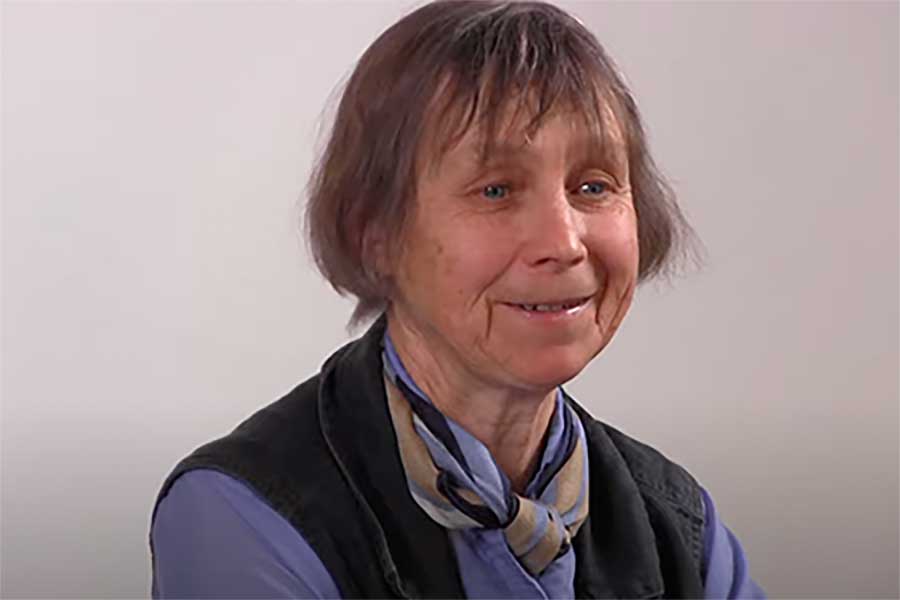Cynthia speaking on the “Welcoming Practice” and “Waking Up”
“In the Welcoming Prayer the energy normally bound up in identification is suddenly vitally freed—sometimes so dramatically you almost hear a “whoosh”— and the influx of this new energy is immediately experienced as a deepening and vitalization of your innermost being.”
– Cynthia Bourgeault
Cynthia recommends and affirms the Welcoming Practice as a vibrant energetic, embodied witnessing practice, and an essential tool for inner transformation. She describes the practice as “Centering Prayer’s powerful companion piece for turning daily life into a virtually limitless field for inner awakening.” When used fully and consistently it has the capacity to quickly and effectively dislodge us from our habitual reactions, emotional programming, and limiting comfort zones. Using it can help move us through challenging or painful experiences, times of disturbed emotion or anguish, and even moments where unhelpful control tendencies and self-inflation takes us over. Through the process of using the practice we benefit by recapturing essential spiritual energy that otherwise would have been lost in a state of resistance or reactivity.
The ideal time to use the practice is as close as possible to the upsetting situation. Even if this is not possible due to the particular circumstances in that moment, turn to the practice as soon afterward as you can. Initially you may find that methodically working through the three steps will take some time and concentrated effort, but as your conscious awareness increases the practice can be employed almost simultaneously while in the midst of challenging or troubling times.
The Welcome Practice has three steps:
- Focus or ‘sink in’ to become aware and physically present to the particular experience or upset. Bring your attention to what is happening as sensation in your body. Without analyzing or judging yourself or your state, inwardly tune into what is happening as the physical embodiment of the experience. Don’t try to change anything at this stage – just stay present. This will help to avoid drawing mental-cognitive conclusions, and will also ground you in the body’s experience rather than repressing what’s arising. By engaging with this awareness to sensation over time it can help us become more attentive to moments of constriction and unconscious reactivity.
- Welcome and lightly name the response that is being triggered by the difficult situation (such as “fear” or “anger” or “pain”). Acknowledge the response as sensation, and recognize that in this moment, if the experience is not being rejected or repressed, it can be endured. Ever so gently, begin to say ‘welcome’ (such as “welcome fear”, etc…) Though this step is counter-intuitive and the impulse is most likely to try to push away the unpleasant emotion, Cynthia explains
“…by welcoming it instead, you create an atmosphere of inner hospitality. By embracing the thing you once defended yourself against or ran from, you are actually disarming it, removing it’s power to hurt you or chase you back into your smaller self.”
The flow of energy shifts almost immediately, becoming more spacious, and defenses can relax sufficiently to allow new perspectives or more positive responses to emerge.
- Transition to a ‘letting go’, whereby the intensity of the situation can recede. This enables the natural fluidity of sensation to come and then go. In the classic welcoming practice methodology there are then four statements that you can employ and recite to yourself at this stage:
- I let go of my desire for security and survival.
- I let go of my desire for esteem and affection.
- I let go of my desire for power and control.
- I let go of my desire to change the situation.
As Cynthia puts it, “This is not a final, forever renunciation of your anger or fear; it’s simply a way of gently waving farewell as the emotion starts to recede.”
Additional resources:
- For Cynthia’s more thorough explanation and application of the Welcoming Practice, see Chapter 13 in Centering Prayer and Inner Awakening.
- The Welcoming Practice (sometimes also referred to as the Welcoming Prayer) was developed by Mary Mrozowski, one of the founders of Contemplative Outreach and an associate of Fr. Thomas Keating (see the Contemplative Outreach website for additional background and resources on this practice).


